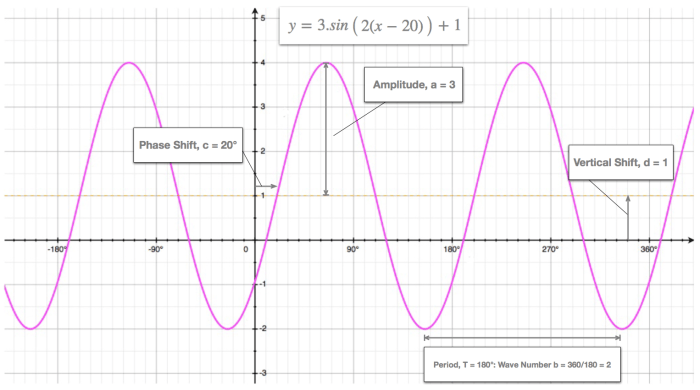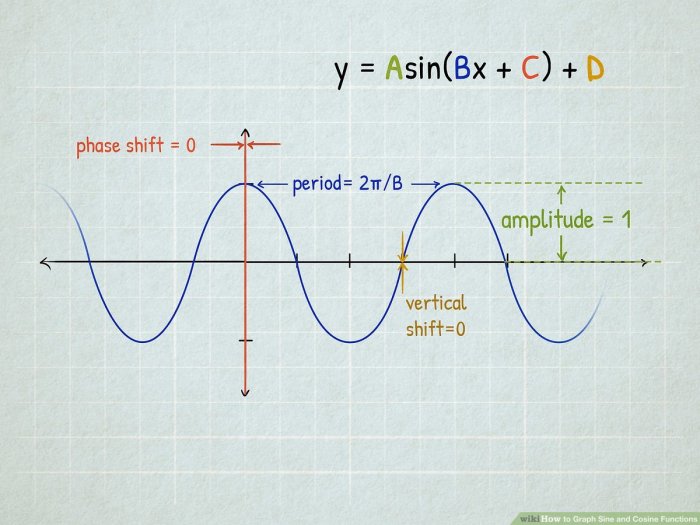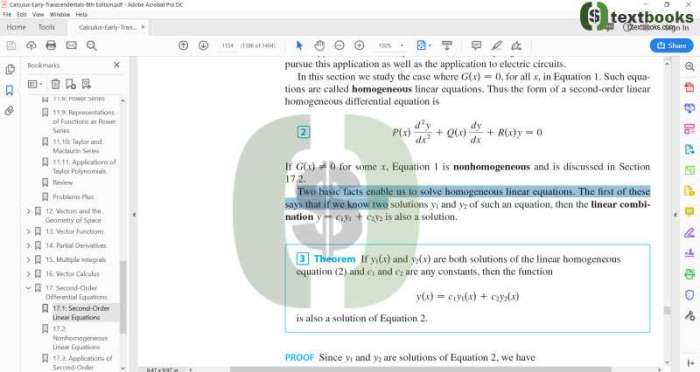Graphing sine and cosine assignment – Graphing sine and cosine functions, a fundamental concept in trigonometry, unveils a captivating world of mathematical exploration. This comprehensive guide delves into the intricacies of these functions, unraveling their definitions, relationships, and practical applications.
From their origins in the unit circle to their ubiquitous presence in fields like physics and music, sine and cosine functions offer a powerful tool for modeling and analyzing periodic phenomena.
Introduction

Graphing sine and cosine functions is a fundamental skill in mathematics. These functions are essential for modeling periodic phenomena, such as the motion of a pendulum or the oscillation of a spring. By understanding how to graph sine and cosine functions, we can gain insights into the behavior of these systems.
Understanding Sine and Cosine Functions

The sine and cosine functions are defined as the vertical and horizontal coordinates of a point on the unit circle, respectively. The unit circle is a circle with radius 1 centered at the origin. As an angle θ rotates around the unit circle, the sine of θ is the y-coordinate of the point on the circle, and the cosine of θ is the x-coordinate of the point.
Graphing Sine and Cosine Functions, Graphing sine and cosine assignment
To graph a sine or cosine function, follow these steps:
- Find the amplitude, period, and phase shift of the function.
- Plot the key points of the function, including the maximum, minimum, and zero points.
- Connect the points with a smooth curve.
Key Features of Sine and Cosine Graphs
- Amplitude:The amplitude of a sine or cosine function is the distance from the midline to the maximum or minimum value of the function.
- Period:The period of a sine or cosine function is the distance between two consecutive maximums or minimums.
- Phase shift:The phase shift of a sine or cosine function is the horizontal shift of the graph from its original position.
Applications of Graphing Sine and Cosine Functions
Sine and cosine functions have numerous applications in real-world situations, including:
- Physics:Modeling the motion of objects in harmonic motion, such as a pendulum or a spring.
- Engineering:Designing structures that can withstand periodic forces, such as bridges or buildings.
- Music:Creating sound waves with specific frequencies and amplitudes.
Advanced Techniques for Graphing Sine and Cosine Functions
In addition to the basic techniques for graphing sine and cosine functions, there are also advanced techniques that can be used to graph more complex functions. These techniques include:
- Transformations:Applying transformations, such as translations, reflections, and dilations, to sine and cosine functions.
- Combinations of functions:Graphing combinations of sine and cosine functions, such as sums, differences, and products.
- Technology:Using graphing calculators or software to graph sine and cosine functions.
Q&A: Graphing Sine And Cosine Assignment
What is the period of the sine function?
2π
What is the amplitude of the cosine function?
The maximum or minimum value of the function
How do I graph a sine function with a phase shift of π/2?
Shift the graph of y = sin(x) to the left by π/2 units
